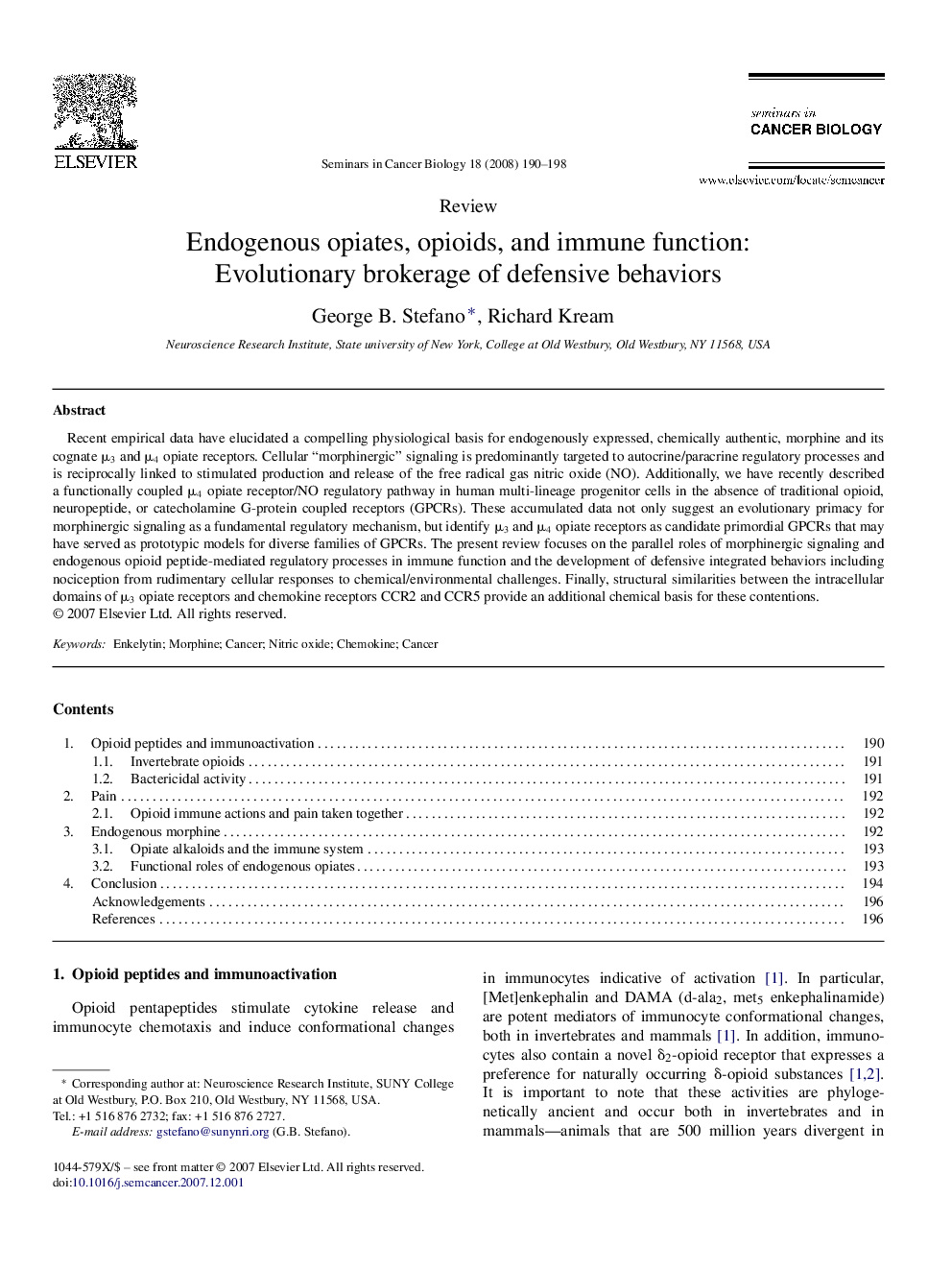| Article ID | Journal | Published Year | Pages | File Type |
|---|---|---|---|---|
| 2024069 | Seminars in Cancer Biology | 2008 | 9 Pages |
Recent empirical data have elucidated a compelling physiological basis for endogenously expressed, chemically authentic, morphine and its cognate μ3 and μ4 opiate receptors. Cellular “morphinergic” signaling is predominantly targeted to autocrine/paracrine regulatory processes and is reciprocally linked to stimulated production and release of the free radical gas nitric oxide (NO). Additionally, we have recently described a functionally coupled μ4 opiate receptor/NO regulatory pathway in human multi-lineage progenitor cells in the absence of traditional opioid, neuropeptide, or catecholamine G-protein coupled receptors (GPCRs). These accumulated data not only suggest an evolutionary primacy for morphinergic signaling as a fundamental regulatory mechanism, but identify μ3 and μ4 opiate receptors as candidate primordial GPCRs that may have served as prototypic models for diverse families of GPCRs. The present review focuses on the parallel roles of morphinergic signaling and endogenous opioid peptide-mediated regulatory processes in immune function and the development of defensive integrated behaviors including nociception from rudimentary cellular responses to chemical/environmental challenges. Finally, structural similarities between the intracellular domains of μ3 opiate receptors and chemokine receptors CCR2 and CCR5 provide an additional chemical basis for these contentions.
